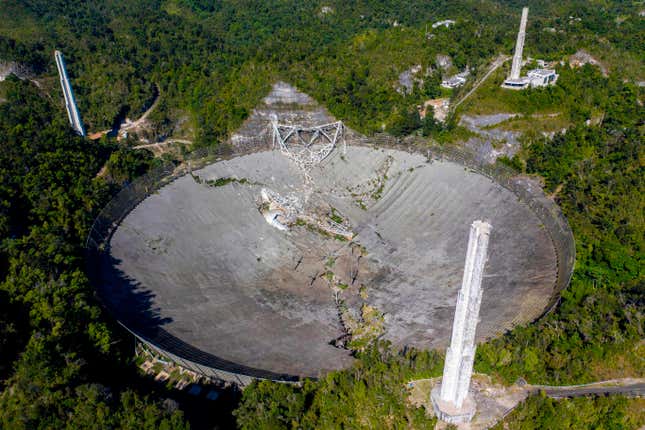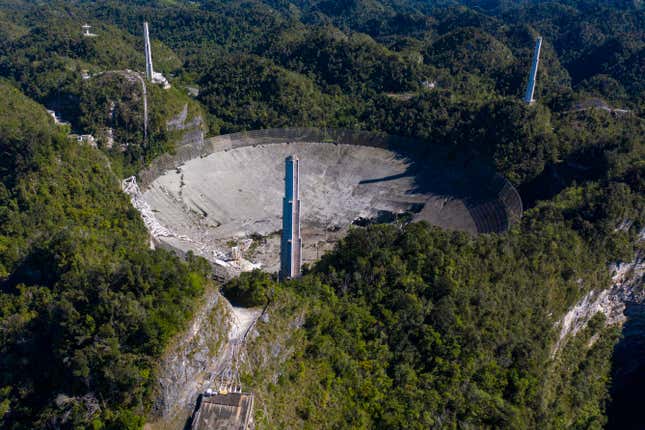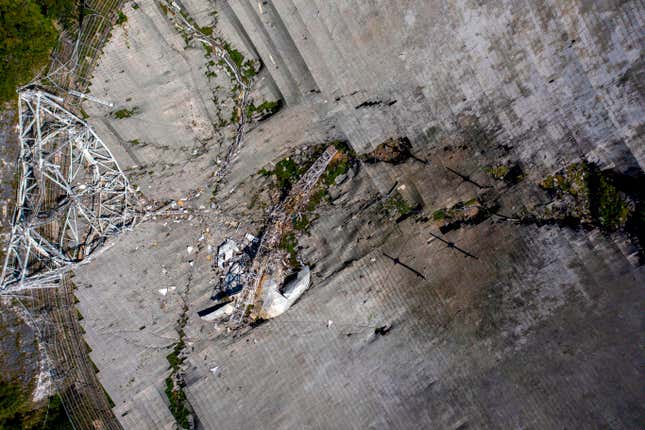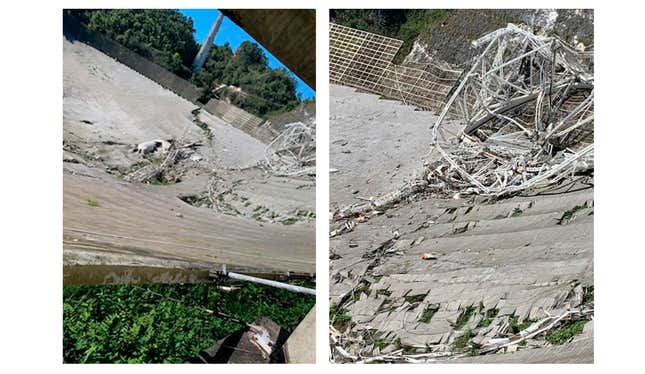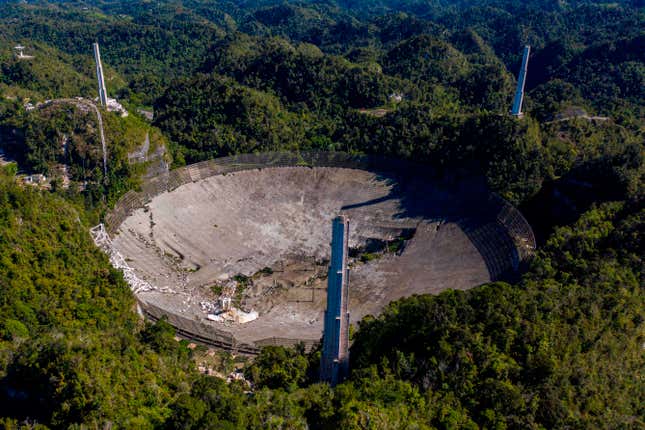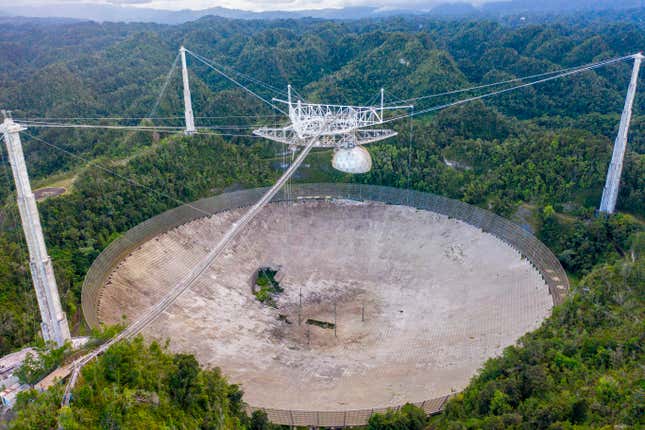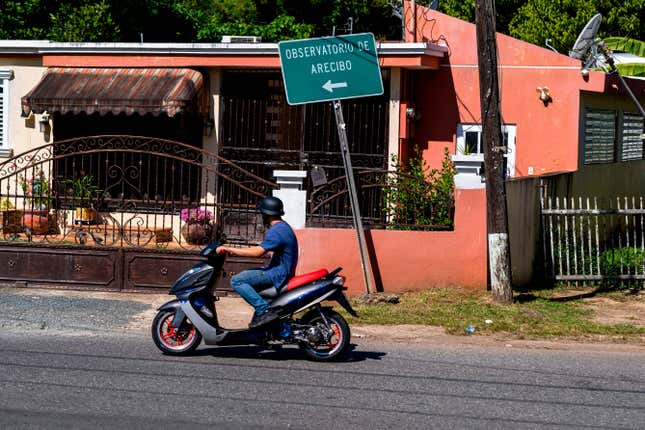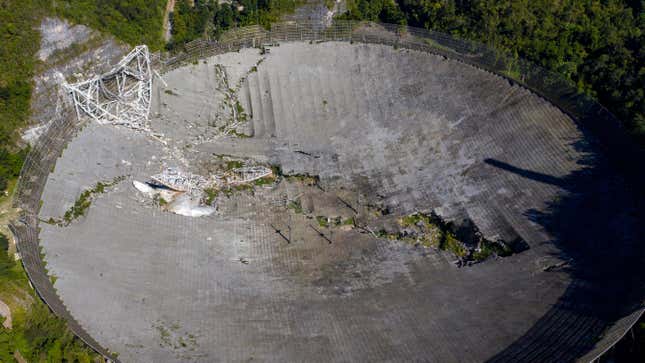
As feared, the 900-ton instrument platform collapsed yesterday at the Arecibo Observatory in Puerto Rico, falling onto the gigantic radar dish below. Photos of the scene are revealing the extent of the damage at the famous facility, which is known for contributing to the search for extraterrestrial intelligence and numerous astronomical discoveries.
The collapse occurred at around 7:55 a.m. local time on December 1, as the receiving platform plunged 450 feet (140 meters) down to the 1,000-foot (305-meter) dish below, which had already been damaged in recent months by fallen cables. No injuries were reported, but the collapse has caused considerable damage to the radar dish and surrounding facilities, including a learning center, according to the U.S. National Science Foundation.


